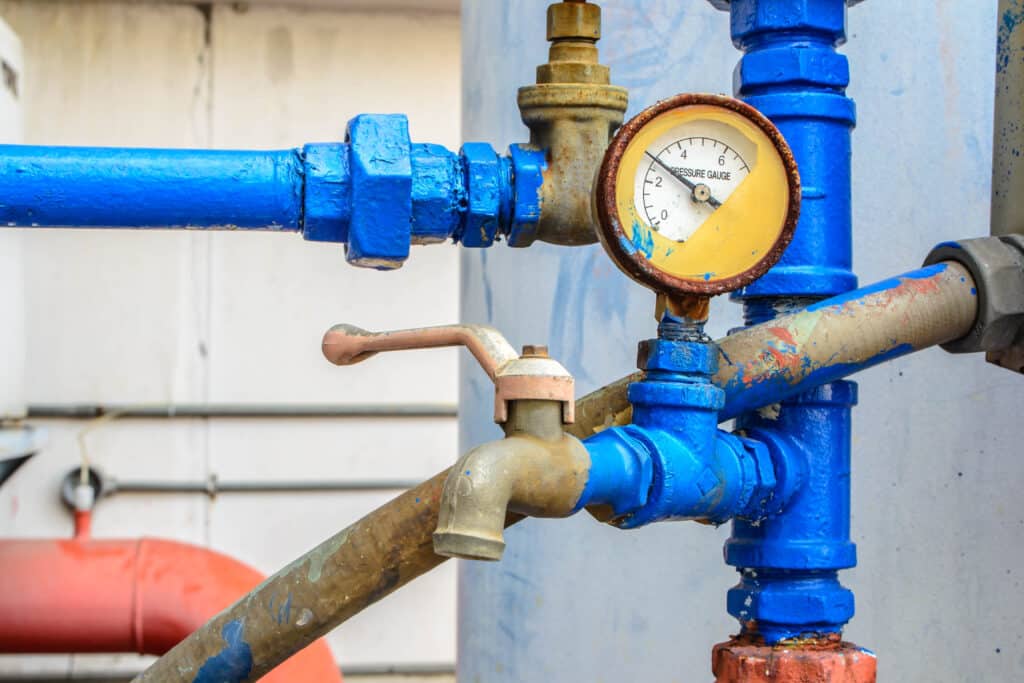Leading Methods for Addressing Low Water Pressure in Your Home
Leading Methods for Addressing Low Water Pressure in Your Home
Blog Article
The article author is making a few good pointers regarding 10 Reasons for Low Water Pressure in Your House in general in this content down the page.

Low water stress in your house can be an irritating trouble, influencing everything from bathing to cleaning dishes. If you're experiencing weak water circulation, there are numerous feasible causes and services to discover. In this guide, we'll go over common reasons for low water pressure and practical steps to address the issue successfully.
Intro to Low Tide Pressure
Low tide pressure happens when the flow of water from your faucets, showers, and other fixtures is weak than typical. This can make day-to-day jobs more challenging and less efficient. Comprehending the reasons for low water pressure is vital to finding the ideal service.
Typical Sources Of Low Tide Pressure
Faulty Pressure Regulatory Authorities
Pressure regulators are in charge of preserving regular water stress in your house. If they malfunction, it can lead to low tide pressure or irregular flow throughout your home.
Metropolitan Water System Issues
In some cases, the trouble exists outside your home. Community supply of water concerns, such as main line leakages or upkeep work, can briefly decrease water pressure in your location.
Pipeline Obstructions
Over time, pipelines can become clogged with mineral deposits, debris, or particles, restricting the flow of water. This is a typical issue in older homes with galvanized steel pipelines.
Deterioration
Corrosion within pipes can result in leaks and reduced water pressure. Rust accumulation can tighten water flow, especially in maturing plumbing systems.
How to Detect Low Water Pressure
Examining Pipelines
Check noticeable pipelines for indicators of leaks, rust, or obstructions. Take notice of any kind of uncommon audios, such as banging or rattling pipes, which could show problems within the plumbing system.
Consulting with a Plumber
If you're unable to pinpoint the cause of low tide pressure, think about working with a specialist plumber to conduct a thorough examination. They can determine underlying issues and suggest suitable solutions.
Checking Faucets and Fixtures
Begin by testing the water stress at different taps and fixtures throughout your home. If the issue is isolated to certain locations, it might suggest local troubles.
DIY Solutions to Repair Low Tide Pressure
Flushing Water Heater
Debris accumulation in the hot water heater can restrict circulation and decrease performance. Flushing the container occasionally aids get rid of sediment and preserve optimal efficiency.
Inspecting Pressure Regulatory Authority
Guarantee that the stress regulator is functioning correctly. Adjusting or changing the regulator can assist bring back proper water stress throughout your home.
Cleansing Aerators and Showerheads
Mineral deposits can collect in aerators and showerheads, minimizing water flow. Eliminate and clean these parts routinely to improve water stress.
Cleaning Clogs in Pipeline
For minor obstructions, try making use of a plumbing snake or chemical drain cleaner to clear obstructions in pipes. Beware when using chemicals and adhere to security standards.
When to Call a Specialist Plumber
If do it yourself efforts fall short to settle the problem or if you suspect considerable plumbing troubles, it's finest to seek support from an accredited plumber. They have the expertise and devices to deal with complex problems safely and efficiently.
Safety Nets to Keep Water Stress
Installing a Stress Booster
Consider installing a pressure booster pump to improve water stress in areas with regularly low circulation. This can be especially beneficial for multi-story homes or residential properties with high-demand fixtures.
Surveillance Water Use
Bear in mind water use practices and avoid overtaxing the plumbing system. Easy changes, such as shocking showers and washing loads, can help keep sufficient water pressure.
Regular Upkeep
Schedule routine maintenance for your plumbing system to prevent issues such as corrosion, leakages, and clogs. Attending to small troubles early can assist stay clear of even more substantial fixings later.
Conclusion
Dealing with low tide stress can be frustrating, however determining the underlying reasons and executing suitable options can recover optimal flow throughout your home. Whether it's cleansing aerators, examining pipelines, or speaking with a plumber, taking proactive actions can make sure a steady supply of water for your day-to-day needs.
FOUR WAYS TO FIX LOW WATER PRESSURE NOW
Turning on a shower or faucet only to find the water comes out in a sad, slow drizzle is never a good feeling. How exactly are you supposed to wash a pan or take a quick shower when it takes 10 minutes just to rinse off a little soap? The good news is that when your water pressure is bad, there's always a cause: typically one that can be easily fixed. Here are some of the most common causes of low pressure and what you can do to fix the issue:
DEBRIS AND MINERAL DEPOSIT BUILDUPS
If you notice low water pressure from just one or two of the fixtures in your house, the problem likely has to do with debris buildup. Water is full of minerals and other debris, all of which can accumulate in your pipes and on your fixtures. This can cause a blockage that affects how much water flows through. To fix this, try filling a small plastic bag with white vinegar, and use a rubber band to hang it around your showerhead or faucet. Let the head of the fixture soak for a few hours, and the vinegar should loosen the deposits.
WATER LEAKS
Leaks are another common cause of low water pressure. If water is flowing out of your plumbing through a hole or crack before it can reach your fixture, the pressure coming out of the faucet or showerhead will be lower. A plumbing professional is your best bet for finding and repairing a leak in your water supply pipes.
Leaks are another common cause of low water pressure. If water is flowing out of your plumbing through a hole or crack before it can reach your fixture, the pressure coming out of the faucet or showerhead will be lower. A plumbing professional is your best bet for finding and repairing a leak in your water supply pipes.
A VALVE ISSUE
If you have low water pressure throughout your home, check your main shut-off valve to make sure it's completely open. You may also want to see if there's a pressure-reducing valve installed. If there is, have a plumber help you adjust the settings to get the pressure you're looking for.
OTHERS USING WATER
Believe it or not, your low water pressure could be caused by your neighbors. If you notice low pressure at certain times of day, it may be because you and the people living next to you have similar schedules - when everyone is showering at the same time, the pressure will be lower in every home. Low pressure throughout the neighborhood may also be caused by an issue with your municipal water supply. If that's the case, call the supplier to see if they're working on the issue.
https://www.rotorooter.com/blog/water-leaking/low-water-pressure-fixes/

As a keen reader on 4 Ways to Troubleshoot Low Water Pressure, I assumed sharing that piece of content was important. Do you know anybody else who is fascinated about Low Water Pressure in the House?? Take a moment to promote it. Thanks for your time spent reading it.
Suggested Site Report this page